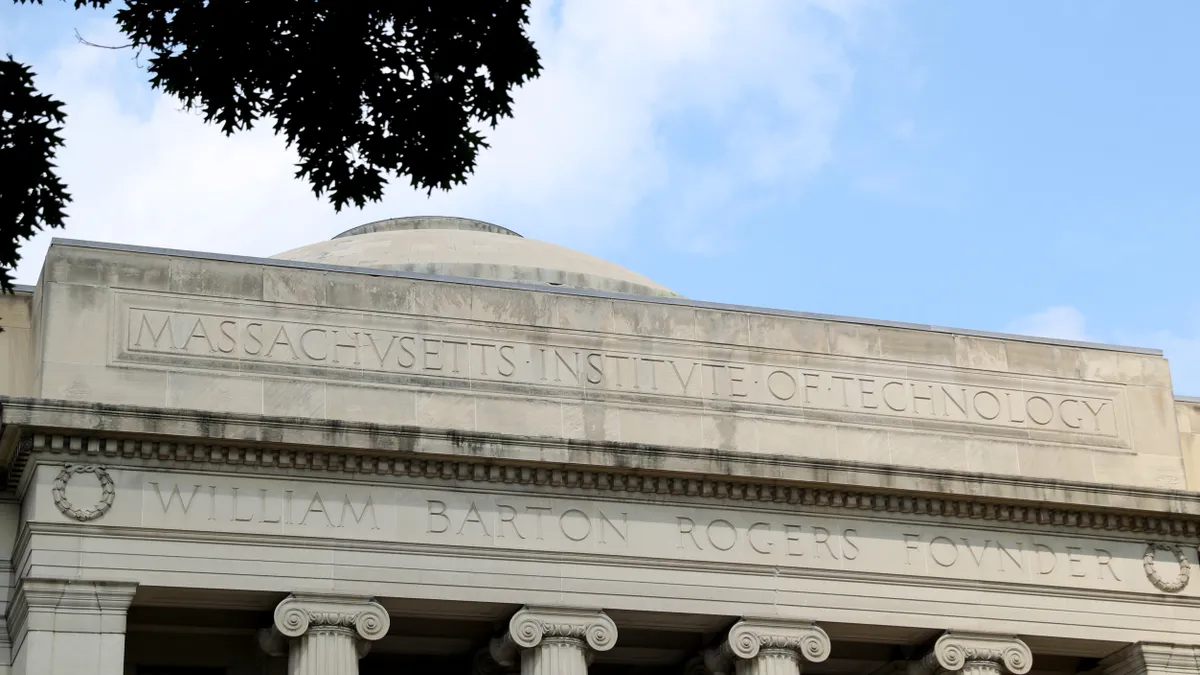The technology sector is booming in Utah. A stretch of land in the state dubbed the "silicon slopes" has become home to thousands of technology startups, some of which are valued at more than $1 billion. Much of that growth has happened in the past decade.
Those companies have major workforce demands. In 2018, the technology sector provided one in seven of the jobs in Utah and supported one-sixth of workers' earnings in the state, according to a recent report from the University of Utah.
"It's moving fast," Salt Lake Community College (SLCC) President Deneece Huftalin said of the state's technology industry. To keep up, she added, college leaders have to keep their ears to the ground to learn what skills local business executives want and be ready to change their programs quickly, if needed.
We spoke with Huftalin to learn more about how SLCC, which opened in 1948, is adapting to this landscape and how it's forging partnerships to serve students better.
This interview has been edited and condensed for clarity and brevity.
EDUCATION DIVE: What is SLCC doing to adapt to companies' changing workforce needs?
HUFTALIN: We've created a point person for technology industry connections. Whether students are interested in noncredit, a degree, a certificate or some incumbent training, that person can be the quarterback that moves them into the right hands and gives them what they need.
But we're also trying to involve the technology CEOs and human resources folks to make sure they're hiring our students. And if they're not, why not? And how do we get internships in a stronger way? They are so vital, but they have to be paid because most of our students are working full-time. No longer can a tech company say, "Oh, come work for us free for six months." We need to help them understand who our students are and what kinds of internship opportunities are the most attractive and relevant to them.
What are technology CEOs saying they want from students?
HUFTALIN: It's all over the map. Some CEOs say, "We really need baccalaureate engineers, and we're not sure how the associate degree or certificate students fit into our space." Yet others in the same industry are saying, "You know what, we don't even care about certificates or degrees. Noncredit training is fine for us."
That's kind of the nature of the tech industry: It's volatile. It's moving fast, and we have to be willing to live in some ambiguity and create quicker access points once we hear what they need.
SLCC offers several noncredit and competency-based programs. How do you envision that evolving?
HUFTALIN: I met with a CEO, and she basically said: "In some of my positions, I do not necessarily need a particular certificate or degree. I need certain competencies." For those folks, we've created both competency-based programs that allow students to mostly move at their own pace and noncredit, short-term programs. Those are going to continue to grow and will be vital for us to stay relevant and connected to what the industry needs.
What kind of partnerships are you establishing to help students?
HUFTALIN: Over the last couple of years, we've been analyzing how our programs transfer into the University of Utah and if we can remove any barriers for students to make that process seamless. We're bringing the university's advisors to campus in a much more visible way so they can talk to students about transferring.
We're also planning a joint building with the U of Utah. There, students could do their first two years with us and then finish their bachelor's degrees with the university in the same building. There are about eight or 10 programs that we're hoping to offer there. So that's a really physical, explicit partnership to improve access to higher education for students in that part of our county.
You've also launched the state's second Dream Center, for students who are undocumented or part of mixed-status families, with help from the U of Utah. What spurred that?
HUFTALIN: As you can imagine, there's lots of fear and uncertainty about what those students can share, who they can talk to and whether they can even come to college.
A Dream Center already existed at the U of Utah, and we have a location in West Valley City (a suburb of Salt Lake City) that's in a neighborhood with great diverse representation. When we opened that site, we had a significant enrollment bump and lots of community support. But we recognized that there are a lot of families there with those kinds of questions, so we worked with the U of Utah to create a resource center where neighborhood families can visit, get their questions answered, feel safe and start their educational experience. They can also access private dollars that help them finance college.
We thought it was a really important support service to help our students focus on their studies and not be worried about other things.
SLCC also recently struck an agreement with the Utah System of Technical Colleges to offer course credit to transferring students. What's behind that?
HUFTALIN: We have technical colleges scattered across the state that offer noncredit workforce training programs. We've worked hard to articulate their noncredit training offerings into some of our applied science degrees. Students who got a certificate with a technical college could transfer into an associate of applied science program at the college and finish their associate degree.
That doesn't happen widely, and it probably needs to happen better. It has been difficult in the past to articulate between noncredit training and credit-bearing degrees. But there's an emphasis across the state to make more of those connections happen. We're trying to identify how we take the training and the skills that they've learned in noncredit settings and give it value here so students can stack that experience and not feel like they hit a dead end.


















